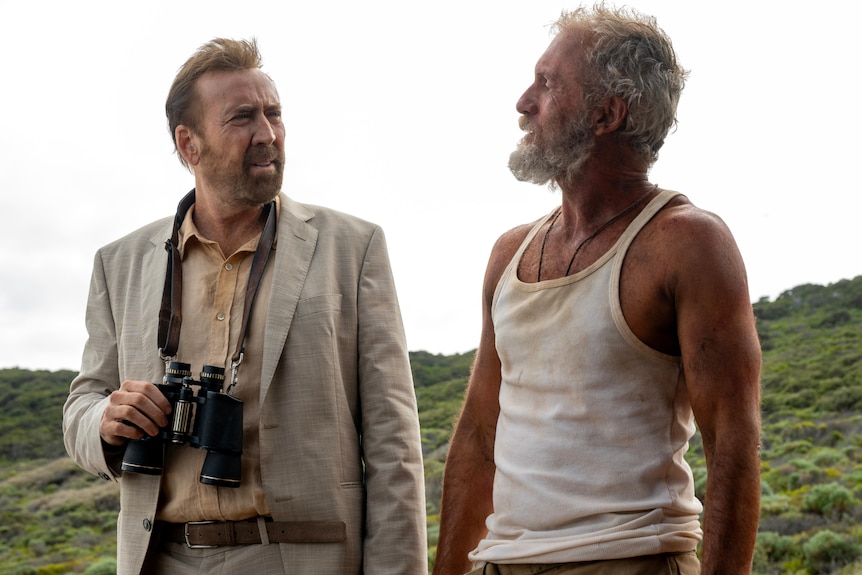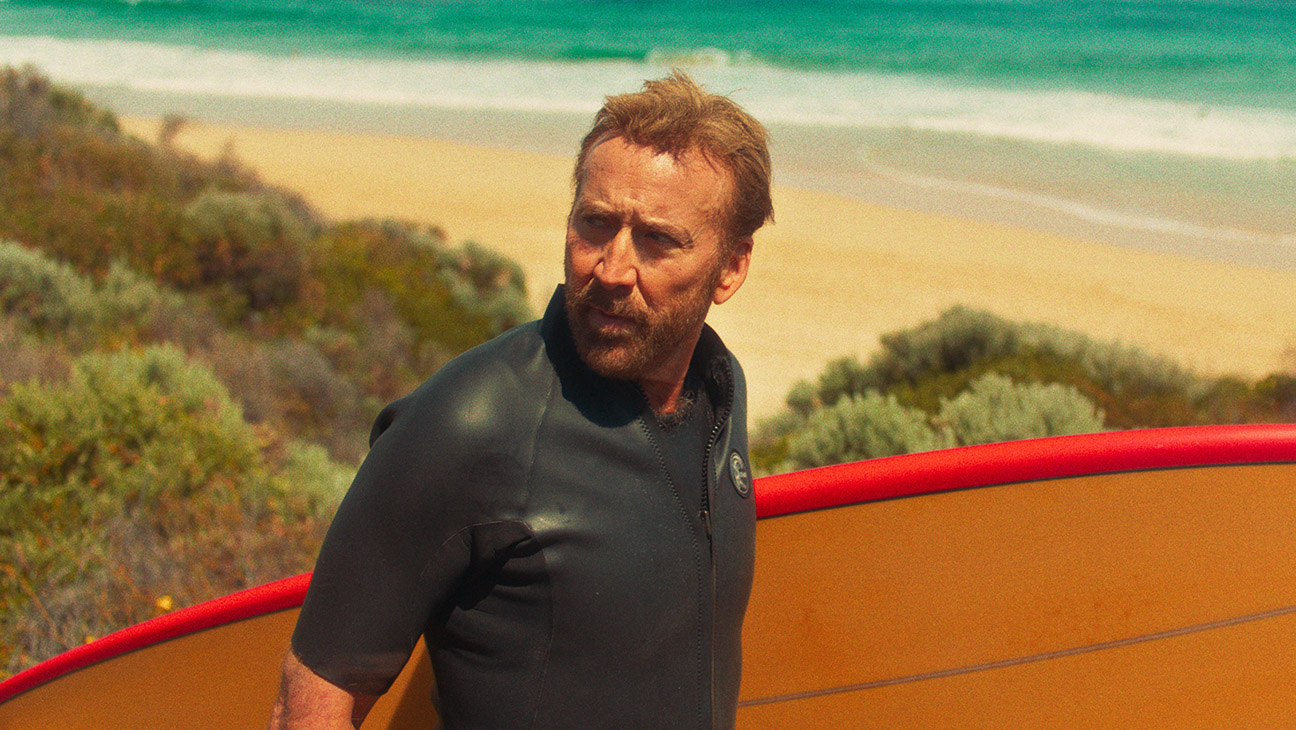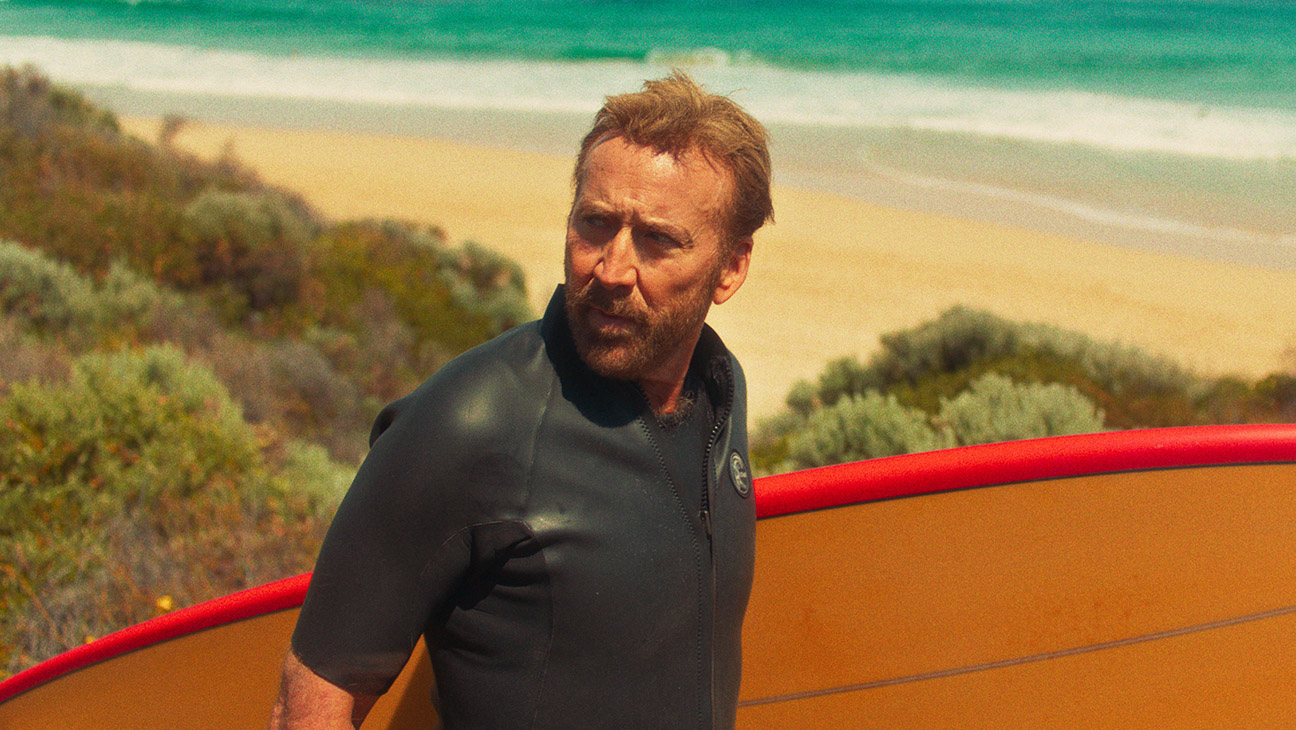## Sun, Surf, and Secrets: Nicolas Cage Rides the Wave of Australian Thriller “The Surfer”
Forget Hollywood clichés. Australia’s cinematic landscape is about to get a serious dose of adrenaline with “The Surfer,” a gripping coastal thriller that promises to leave you breathless. Imagine this: sun-drenched beaches, crashing waves, and a chilling mystery that unravels like a rip current, pulling you deeper into its murky depths.

Starring the inimitable Nicolas Cage alongside Julian McMahon and rising star Miranda Tapsell, “The Surfer” isn’t just another Hollywood blockbuster. This Australian-made film brings a uniquely local flavour to the genre, blending stunning coastal scenery with a suspenseful plot that will keep you on the edge of your seat.

Australia’s Gritty Underbelly
The Surfer’s Reclusive Setting

“The Surfer” utilizes the Australian coastline and its isolated beach town as more than just a picturesque backdrop. The film’s visual language emphasizes the claustrophobia inherent in this seemingly open setting, creating a sense of psychological tension that mirrors the protagonist’s struggle for agency.
The film’s focus on a single beach and its adjacent parking lot, while seemingly restrictive, serves to amplify the protagonist’s isolation. The relentless sun, the crashing waves, and the endless expanse of sand become both a source of beauty and a symbol of the protagonist’s growing desperation.

The Cinematic Language of “The Surfer”
Director Lorcan Finnegan employs a distinct cinematic language to enhance the film’s unsettling atmosphere. Frequent zooms into the protagonist’s twitchy eyes, sudden jump cuts, and shimmering shots that evoke an underwater world contribute to a sense of disorientation and psychological unease.
These stylistic choices, reminiscent of classic Australian New Wave films, serve to blur the lines between reality and the protagonist’s deteriorating mental state, leaving the audience questioning the nature of truth in the film’s world.

A Coastal World Confined
Despite the vastness of the ocean that surrounds the beach town, the protagonist finds himself trapped in a web of social and psychological constraints. The locals’ hostility, the enforced code of conduct, and the relentless scrutiny he faces create a sense of claustrophobia that permeates every aspect of his experience.
The film explores the idea that true freedom can be elusive, even in the most seemingly open environments. The protagonist’s struggle to break free from these constraints becomes a metaphor for the broader societal pressures that can limit individual expression and agency.

Beyond the Waves
The Legacy of Australian New Wave Cinema
“The Surfer” draws clear inspiration from the legacy of Australian New Wave cinema, a movement that emerged in the 1960s and challenged traditional filmmaking conventions with its exploration of social alienation, psychological realism, and unconventional narratives.
Films like Nicolas Roeg’s “Walkabout” (1971) and Peter Weir’s “Picnic at Hanging Rock” (1975) share thematic similarities with “The Surfer,” examining the complexities of identity, belonging, and the human experience within isolated Australian landscapes.
The Surfer’s Enduring Relevance
“The Surfer” resonates with contemporary audiences grappling with similar themes of isolation, societal pressures, and the search for meaning in a rapidly changing world. The film’s exploration of masculinity, toxic behavior, and the complexities of human relationships remains timely and relevant.
The film’s enduring impact lies in its ability to provoke thought and spark conversations about these important social issues, inviting viewers to reflect on their own experiences and perspectives.
The Future of Australian Thrillers
“The Surfer” paves the way for a new wave of Australian thrillers that push creative boundaries and explore complex social issues. The film’s success demonstrates the potential for Australian cinema to produce genre-bending, thought-provoking entertainment that resonates with both local and international audiences.
By embracing innovative storytelling techniques, compelling characters, and relevant themes, Australian filmmakers can continue to captivate audiences and establish Australia as a leading force in the global thriller landscape.
Conclusion
“The Surfer,” a thrilling Australian production, throws together an unlikely trio: Nicolas Cage, Julian McMahon, and Miranda Tapsell, in a story that unravels against the backdrop of a captivating coastal setting. The article dives into the film’s premise, exploring themes of family, redemption, and the darker aspects of human nature, all woven into a suspenseful narrative. We learn about the compelling characters, the unique environment that shapes their journey, and the intricate plot twists that keep viewers on the edge of their seats.
Beyond the entertainment value, “The Surfer” holds a significant place in the Australian film industry. It signifies a growing trend of attracting international talent while showcasing local stories and expertise. The film’s success could pave the way for more diverse and ambitious Australian productions, further solidifying the country’s position on the global cinematic map. Moreover, “The Surfer” raises questions about the impact of human actions on the natural world, a theme increasingly relevant in today’s climate-conscious era.
As the waves crash and secrets surface in “The Surfer,” it’s clear that this film is more than just a coastal thriller. It’s a reflection of our own complexities, our yearning for connection, and the consequences of choices made in the face of adversity. This Australian production promises to leave audiences captivated, pondering the depths of human nature long after the credits roll.
